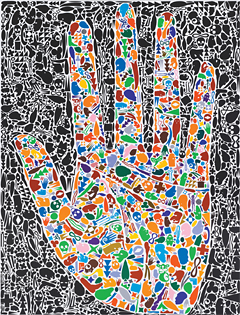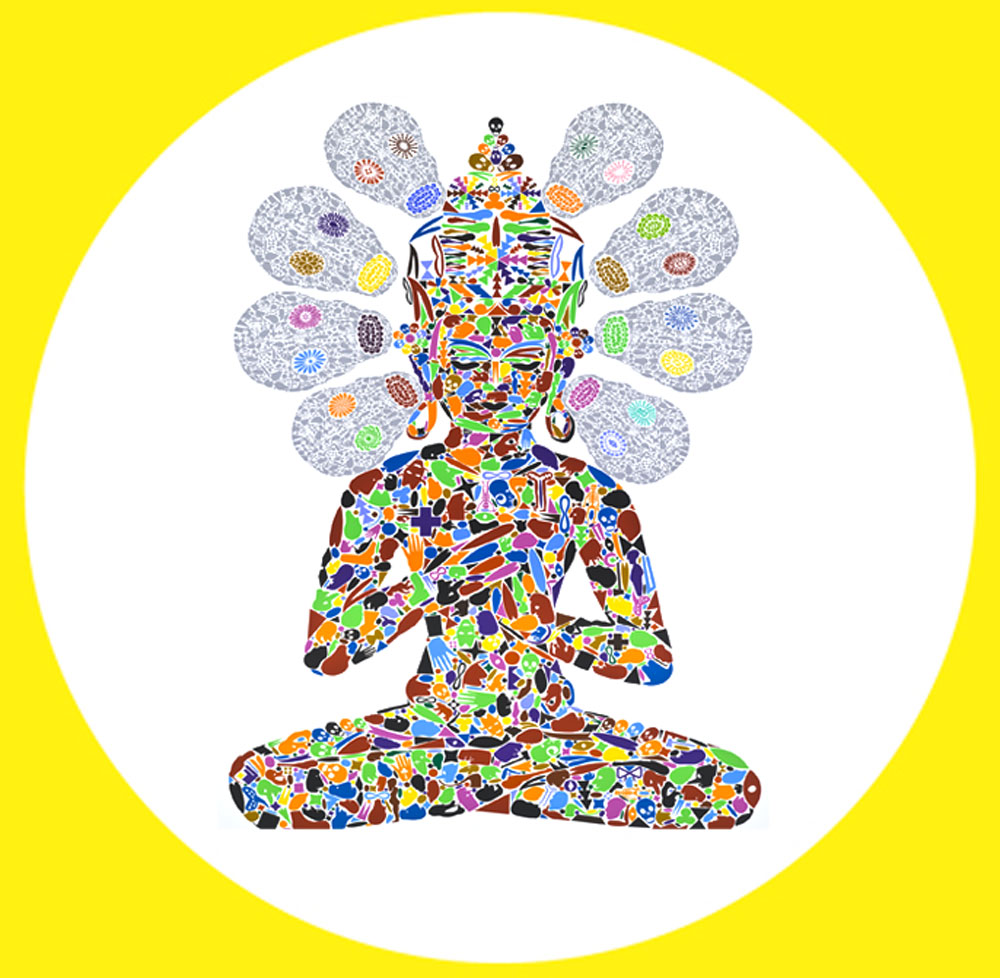Before we meditate for the first time, we have ideas about what meditation is, what it does, and where it should lead. Then when we get our introductory instructions—either out of a book or magazine, or from a teacher leading a class or a retreat—we’re hopeful that the instructions will fulfill our purpose for meditating and that meditation will do for us what it has reportedly done for others. We look forward to becoming calmer, to our physical pain diminishing, and to our emotional stress and turmoil being eased; we anticipate meditation granting us the peace of mind we so earnestly seek.
We often do not even consider that we could have problems following the meditation instructions, or that the meditation instructions may not be the “right” ones for us. We assume that meditation practices are proven to work for most anyone, so when we experience frustration with the task of meditating, we often lay the blame on ourselves. We don’t see that the meditation practice itself has something to do with it.
Contemporary Buddhist teachers often instruct that the real obstacles, or hindrances, in meditation are negative emotional states or unskillful types of thinking. Unfortunately, this view only deflects our attention from what actually keeps us stuck in our practice: the way we do our meditation practice. In fact, it is not what we experience in meditation that creates the hindrance, it is how we apply the instructions. Having negative emotions and discursive thoughts are common meditation experiences, but they do not control our practice in the same way the meditation instructions do.
Over the last two decades in which I have been teaching meditation, I have observed that much of our frustration, struggle, feelings of failure and low self-esteem as meditators is linked to the way we have been applying meditation instructions. This is in part due to the way that we hold on to the correctness of the instructions and how we adopt rules that prohibit certain experiences, both of which can create impasses in our meditation practice. These are two of the most common causes for the experience of being stuck.
Many of us encounter an impasse when we are trying to figure out how to do the instructions correctly. The notion that there is a definitive right way of doing a particular meditation practice keeps the impasse alive. We assume that if we can figure out the right way to sit, and just do it, our sittings will be harmonious.
For example, instructions for watching the breath in the Vipassana tradition often raise questions about following the instructions correctly. Is it correct to observe the breath at the nostrils or the abdomen? If it is correct to observe it at the nostrils, how are you supposed to observe it—as a sensation of air passing over your upper lip on the way out and as a sensation in your nostrils on the way in? Is it okay to follow the breath into the lungs? And what about the abdomen? Are we noticing the breath going in or out of our bodies, or are we supposed to notice the rising and falling of the abdomen only? And why the abdomen? Don’t we naturally experience our chest heave and fall as we breathe? What about being aware of the sound of the breath? That, too, is a part of our experience of breathing. But Vipassana teachers often tell us that there is one correct way of observing the breath and that other ways are not right.
The Vipassana tradition and most other Buddhist traditions generally discourage doubting the meditation instructions we are given. We are often told that doubting our teachers and their traditions is a hindrance to practice, but this puts us in a bind: If we discover a way to do a meditation practice that seems more conducive to concentration and wisdom than the established way, we have to either disregard our discovery or disobey the instructions. If you take the approach of not doubting the instructions, you are likely to try to follow the instructions with more effort in order to make them work as well as, or better than, the way you discovered on your own.

But this direction often strengthens obstacles instead of weakening them. Pushing yourself to follow the instructions more correctly, and then finding yourself stuck in similar ways, and then trying harder to follow the directions often just puts you in cycles of meditative success and failure. As long as you are primarily focused on doing a practice correctly, you will only examine the practice through the lens of figuring what you are doing wrong so that you can stop doing that and just do the practice in the right way. But what you don’t see is what the practice is doing to you.
Although we are not often taught this, the most skillful way through an impasse in meditation is to become aware of it and of what holds it together and keeps it running. To do this, you need to keep doing the meditation instructions that have gotten you to this point, but instead of following them “harder,” try approaching them in a softer, gentler manner. Do them loosely, and don’t do them all of the time. Instead, try doing them when it is easy to do them, or, when you feel you need to. But also be willing not to do them every single time you feel the need.
By adding flexibility and choice to a meditation practice that has become rigid and restrictive, we move our attention away from a narrow focus on doing the instructions correctly to a broader awareness of how we are doing the instructions. We discover that sometimes we are using the instructions to get to some desired or anticipated meditative state and other times we are using them to avoid certain feelings, memories, or thoughts. Then there are those times when we would otherwise feel lost and confused in our meditation sittings and need the instructions as an anchor. There are many ways we have held onto the instructions we have received, so by giving more space around them and giving ourselves permission not to follow them, we can begin to see what they are actually doing for us.
AS WE LEARN TO WORK skillfully with the instructions instead of resolutely pushing ourselves to follow the instructions as correctly as possible, we will begin to see the other most common cause for impasses: adopting rules that prohibit certain experiences. On a basic level, meditation instructions are rules you should follow during meditation. If they don’t start out as rules, they eventually turn into rules. A simple instruction to bring your attention back to the breath when the mind wanders becomes a rule prohibiting thinking, reminiscing, planning, drifting, contemplating, and so on. Even if a teacher then states that you should practice greater acceptance of the wandering mind and only gently bring your attention back to the breath, the rule prohibiting mind-wandering still remains intact. The way we tend to relate to contradictory meditation instructions (which is what “Bring your attention back to the breath” and “Have greater acceptance of the wandering mind” are) is to resolve the contradiction in favor of the rule that clearly exhibits the fundamental principle of the meditation practice: to train one’s attention to stay with the breath.
The kinds of impasses we get into when we meditate according to a system of rules are those based on controlling and dominating our experiences. We have a rule about not drifting off in meditation, and so we work to stop ourselves from doing so. We have a rule about not rehashing the conversations and events of the day, so we try to get through those segments of our sittings and on to something more “meditative.” We have a rule to sit with our backs straight, and so we correct our posture each time it slumps. We have rules about not fantasizing or planning or ruminating or working on projects, and so we devalue or disregard those experiences.
I suggest you become aware of the rules in your meditation practice, and not just try to stop them, for that would just be creating a rule not to have rules. You will have rules in your meditation practice, but they need to be ones that serve you rather than oppress you. The rules need to be open to questioning, to reassessment, and to further refinement. Global rules, where you have to do the same thing in all instances, are not as helpful as rules that have specific contexts in which they are used. For example, a rule to “always stop one’s mind from wandering” is not as helpful as a rule to “disengage from planning the execution of a harmful action” (such as seeking revenge).
Are there meditation instructions that don’t foster the exclusion of experiences? Even when a meditation practice is presented as accepting of everything, as open to the full range of one’s experience, there are still experiences—such as drifting off or having mundane thoughts—that tend to be excluded. It might be quite a revolution in our thinking about meditation to consider including all types of experiences in our regular sittings. If you are going to include the various experiences of thinking, you may find yourself thinking quite a bit more than your comfort level. If you include drowsiness and dull mind states, you may find yourself falling asleep. “How would this be meditating?” you might ask.
There is a middle way here between the extremes of rigidity and passivity, one that offers a more legitimate form of meditation. The beginning instructions I have given for nearly two decades provide just enough of a grounding in the seated body for the meditator to develop a capacity to be with thoughts, feelings, and sensations as they arise. These suggestions are loose and open, but you can make them tighter if you need to. The instructions are as follows:
Sit in a comfortable position, one that you would not need to change during the sitting. If you do need to change your position, do so slowly and consciously. You may also lie down, but try to adopt a position that you would not normally sleep in.
Bring your attention to the touch of your hands resting in your lap or on your thighs. But do not try to hold your attention there. Allow thoughts, feelings, and sensations to arise, and let your attention go with them.
If your attention leaves the touch of the hands for a long period of time (several minutes), you can gently bring your attention back. Otherwise, just sit with what comes up. If you encounter an experience that is hard to tolerate, after a while of being with it you can bring your attention back to the touch of the hands. But only hold it there long enough to feel grounded or relaxed, and then, if your mind goes into that kind of experience again, just let it.
People have made rules out of these instructions, and you might too. That is fine. At some point, hopefully, you will become aware of those rules. But, for now, it is enough to know that there is no way to do this wrong, as it is not about following an instruction as much as about allowing your experiences to unfold. Seeing for yourself, from your own experience, what works and what doesn’t is what meditation is all about.
Thank you for subscribing to Tricycle! As a nonprofit, we depend on readers like you to keep Buddhist teachings and practices widely available.
